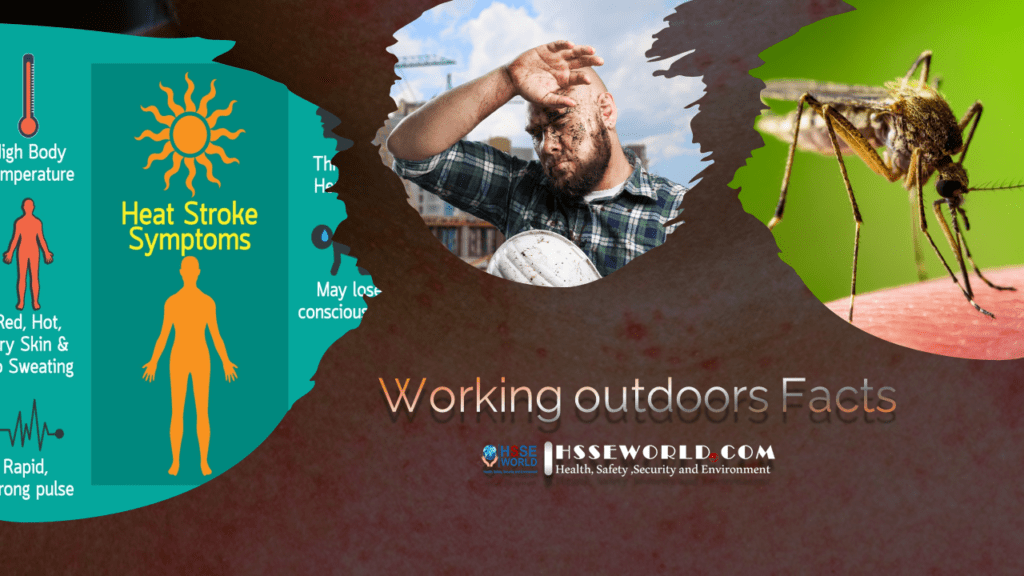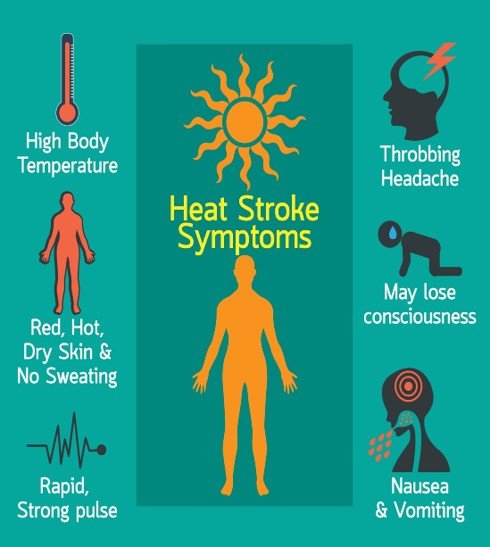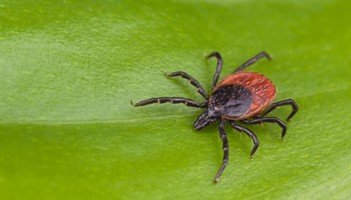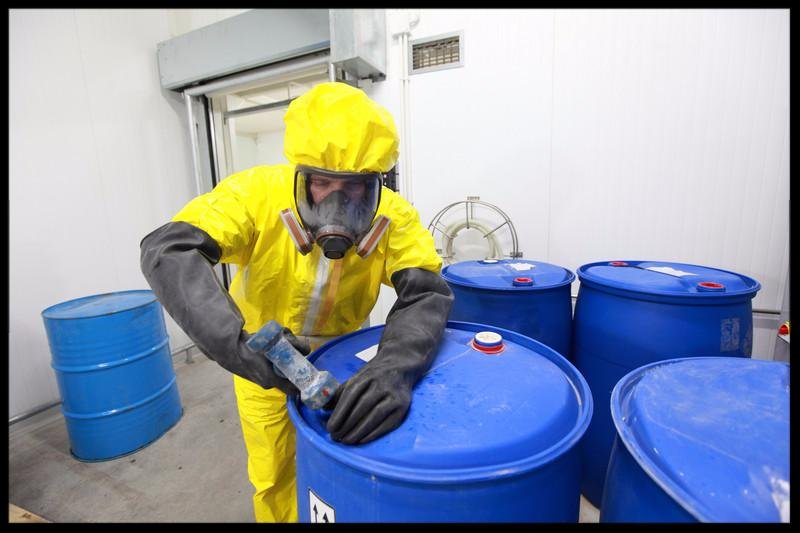Hot summer months pose special risks for working outdoors and workers exposed to heat, sun, and other hazards. Employers and workers should know the potential hazards in their workplaces and how to manage them.
In this article, you will be familiar with working Outdoors facts and special risks and hazards that depend on the type of work, geographic region, season, and duration of time the workers are outside such as :
- Sun
- Heat
- Heat Exhaustion
- Heat Rash
- sun burn
- Heat stroke
- Lyme Disease
- West Nile Virus
Employers should train outdoor workers about their workplace hazards, including hazard identification and recommendations for preventing and controlling their exposures.

Sun
Sunlight contains ultraviolet (UV) radiation, which causes premature aging, wrinkles, cataracts, and skin cancer. There are no safe UV rays or safe suntans. Workers should practice extra care in the sun if they:
- burn easily;
- spend much of their time outdoors; or
- have any of the following physical features:
- numerous, irregular, or large moles;
- freckles;
- fair skin; or
- blond, red, or light brown hair.
There are several ways workers can block harmful rays:
Cover-up.
Wear tightly woven clothing that you cannot see through.
Use sunscreen.
A sunscreen with a sun protection factor (SPF) of at least 15 blocks 93% of UV rays. Be sure to follow application directions on the bottle or tube.
Wear a hat.
A wide brim hat, not a baseball cap, works best at protecting the neck, ears, eyes, forehead, nose, and scalp.
Wear UV-absorbent shades.
Sunglasses do not have to be expensive, but they should block 99% to 100% of the UVA and UVB radiation. Before you buy, read the product tag or label.
Limit exposure.
UV rays are most intense between 10 a.m. and 4 p.m.
Also Read: Photo of the day: sun safety in the workplace
Heat
The combination of heat and humidity can be a severe health threat during the summer months. Working outdoors puts employees at risk for heat-related illnesses. Workers are at increased risk for heat-related illnesses when they:
- use improper work methods;
- are not used to hot temperatures or high humidity;
- are over the age of forty;
- are in poor physical condition or overweight;
- Use certain medications, such as antihistamines, diuretics, and some tranquilizers;
- have had prior heat-related illnesses;
- have used drugs or alcohol within 24 hours before working in the heat;
- have heat rash or sunburn; or
- wear restrictive or too much clothing.
Watch Video: Preventing Heat-Related Illnesses
Heat exhaustion is a mild form of heat-related illness that can develop after several days of exposure to high temperatures without enough fluids. Those most prone to heat exhaustion are elderly workers, workers with high blood pressure, and those working in hot environments.
Warning signs of heat exhaustion include:
- heavy sweating;
- paleness;
- muscle cramps;
- tiredness;
- weakness;
- dizziness;
- fainting;
- headache;
- nausea or;
- vomiting.
Effective measures at decreasing the body’s temperature include:
- drinking cool, nonalcoholic beverages;
- resting, and;
- taking a cool shower, bath, or sponge bath.
Also Read: Responding to heat stroke, heat exhaustion
Heat Rash

Heat rash is a skin irritation caused by excessive sweating during hot, humid weather. Heat rash looks like a red cluster of pimples or small blisters. It is more likely to occur on the neck and upper chest, in the groin, under the breasts, and in elbow creases. The best treatment for heat rash is to provide a cooler, less humid environment and keep the affected area dry. Dusting powder may be used to increase comfort but avoid using ointments or creams. Heat rash, unless infected, does not require medical assistance.
Sun Burn
Sunburn should be avoided because it damages the skin. Although the discomfort is usually minor and heals quickly, a more severe sunburn may require medical attention.
Consult a doctor if these symptoms are present:
- fever;
- fluid-filled blisters; or
- severe pain. When treating sunburn:
- avoid repeated sun exposure;
- apply cold compresses or immerse the sunburned area in cool water;
- apply moisturizing lotion to affected areas, but avoid salve, butter, or ointment; and
- do not break the blisters.
Also read: Sun & UV radiation Exposure
Heat Stroke

Heat stroke occurs when the body is unable to regulate its temperature. During heat stroke, a person’s temperature rises rapidly, their sweating mechanism fails, and their body cannot cool down. Body temperature may rise to 106°F or higher within 10 to 15 minutes, which can cause permanent disability or death if emergency treatment is not provided immediately.
Recognizing Heat Stroke
Warning signs of heat stroke vary but may include the following:
- an extremely high body temperature above 103°F orally;
- red, hot, and dry skin with no sweating;
- rapid, strong pulse;
- throbbing headache;
- dizziness;
- nausea; and
- possible unconsciousness.
If a worker shows signs of heat stroke, call Your facility’s Emergency contact number 911 for immediate medical assistance and cool down the victim. While waiting for emergency personnel:
- get the victim to a shaded area;
- cool the victim using any available method, such as:
- immerse in a tub of cool water;
- place in a cool shower;
- spray with cool water from a garden hose;
- sponge with cool water from a thermos or water bottle;
- wrap in a cool, wet sheet; or
- place under a fan.
- monitor their body temperature and continue cooling efforts until the body temperature drops below 101°-102°F; and
- never give a heat stroke victim alcohol to drink.
Sometimes heat stroke victim’s muscles may twitch uncontrollably. If this happens:
- remove nearby items to keep the victim from injury;
- do not give fluids or place any object in the person’s mouth; and
- if there is vomiting, make sure the airway remains open by turning the victim on his or her side.
Also Read: Responding to heat stroke, heat exhaustion
Lyme Disease

Bites from infected ticks cause Lyme disease. Most, but not all, victims develop a “bulls-eye” rash as a symptom of Lyme disease. Other signs may be non-specific and similar to flu symptoms such as fever, lymph node swelling, neck stiffness, generalized fatigue, headaches, migrating joint aches, or muscle aches.
Outdoor workers – such as those who work in construction, landscaping, forestry, brush clearing, land surveying, farming, railroads, oil fields, utility lines, or park and wildlife management — are at increased risk for Lyme disease.
Workers can protect themselves against ticks by:
- wearing light-colored clothes to see ticks more easily;
- wearing long sleeves and pants tucked into socks or boots;
- wearing high boots or closed-toe shoes that cover the feet;
- wearing a hat;
- using tick repellants but not on the face;
- showering after work;
- washing and drying work clothes at a high temperature each day;
- examining your body for ticks after work; and
- Remove any attached ticks promptly with fine-tipped tweezers. (Never use petroleum jelly, a hot match, or nail polish to remove the tick.)
Also Read: Tick’s Threats when working outdoors -Safety Moment #16
West Nile Virus

Illness from the West Nile Virus is rare. Mild symptoms include fever, headache, body aches, and, occasionally, swollen lymph glands and a skin rash on the body’s trunk. Severe symptoms include headache, high fever, neck stiffness, stupor, disorientation, coma, tremors, convulsions, muscle weakness, and paralysis. Removing standing water in containers around areas, such as discarded tires, buckets, or barrels, helps reduce mosquito-breeding areas.
Workers can protect themselves from mosquito bites by:
- applying insect repellent with DEET (N, N-diethyl-meta-toluamide) to exposed skin;
- spraying clothing with repellents containing DEET or permethrin (unless you wear fire retardant clothing at your worksite); and
- wearing long sleeves, long pants, and socks.
Protect Employees
Employers can protect workers by establishing the following practices:
- train all employees on the signs and symptoms of heat-related illnesses and how to respond;
- schedule the most challenging work during cooler times of the day;
- schedule workers in pairs;
- provide frequent, short breaks in cool shaded areas;
- provide plenty of cool water and encourage workers to drink one cup every 15 to 20 minutes;
- provide adequate ventilation in hot work areas with the use of fans, blowers, air conditioning, increased insulation on furnace walls, and shields around hot machines or furnaces; and
- provide tools and equipment that reduce physical demands on workers.
To prevent heat-related illness, workers are encouraged to:
- wear light-colored, loose-fitting, breathable (preferably cotton) clothing; and
- avoid eating large meals or consuming caffeine or alcoholic beverages before and during work in hot environments.
Also Read: Heat Stress: Working Safely in the Heat
Please visit our Safety Resources SAFETY BAG to have many Safety Resources





